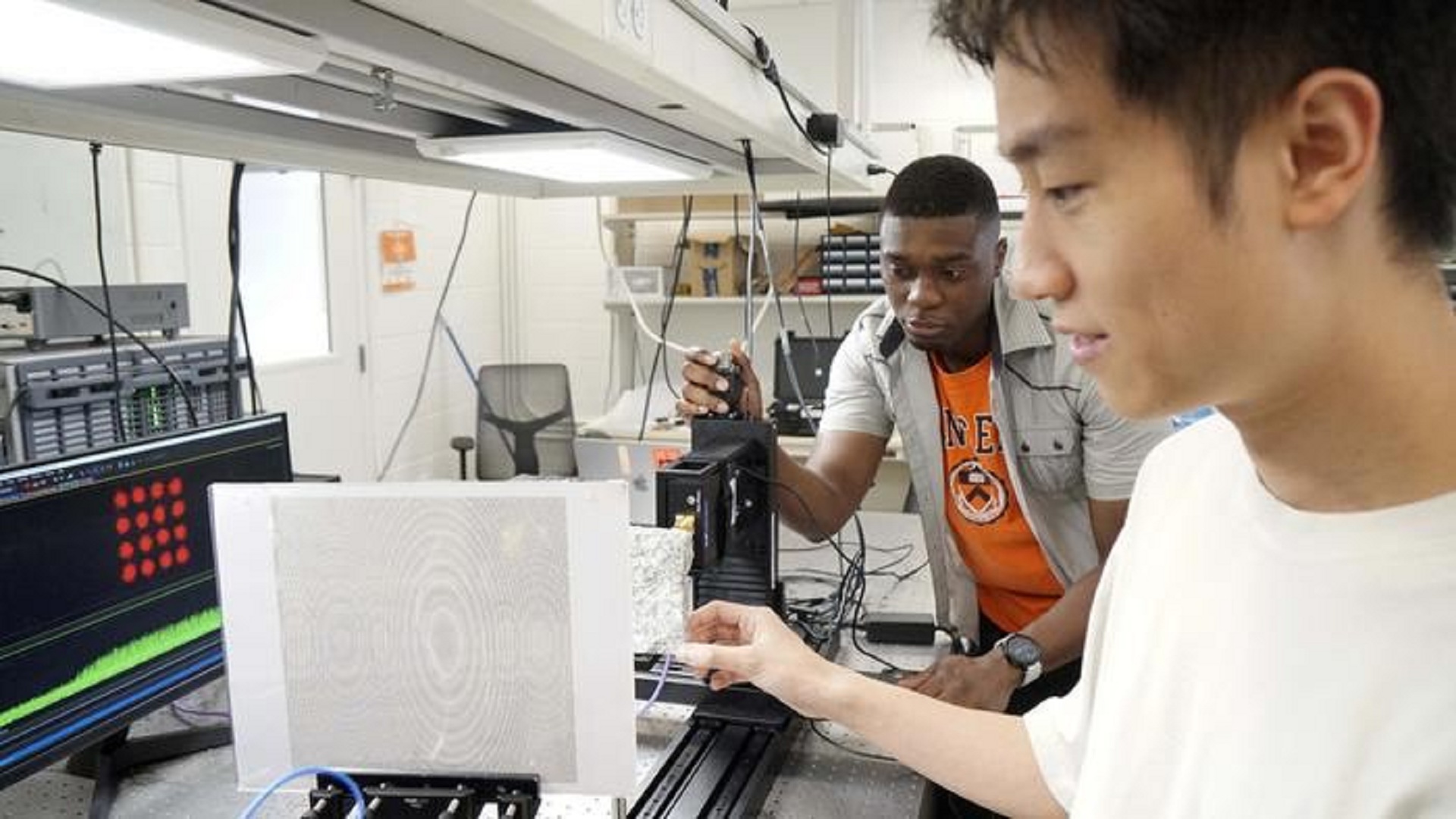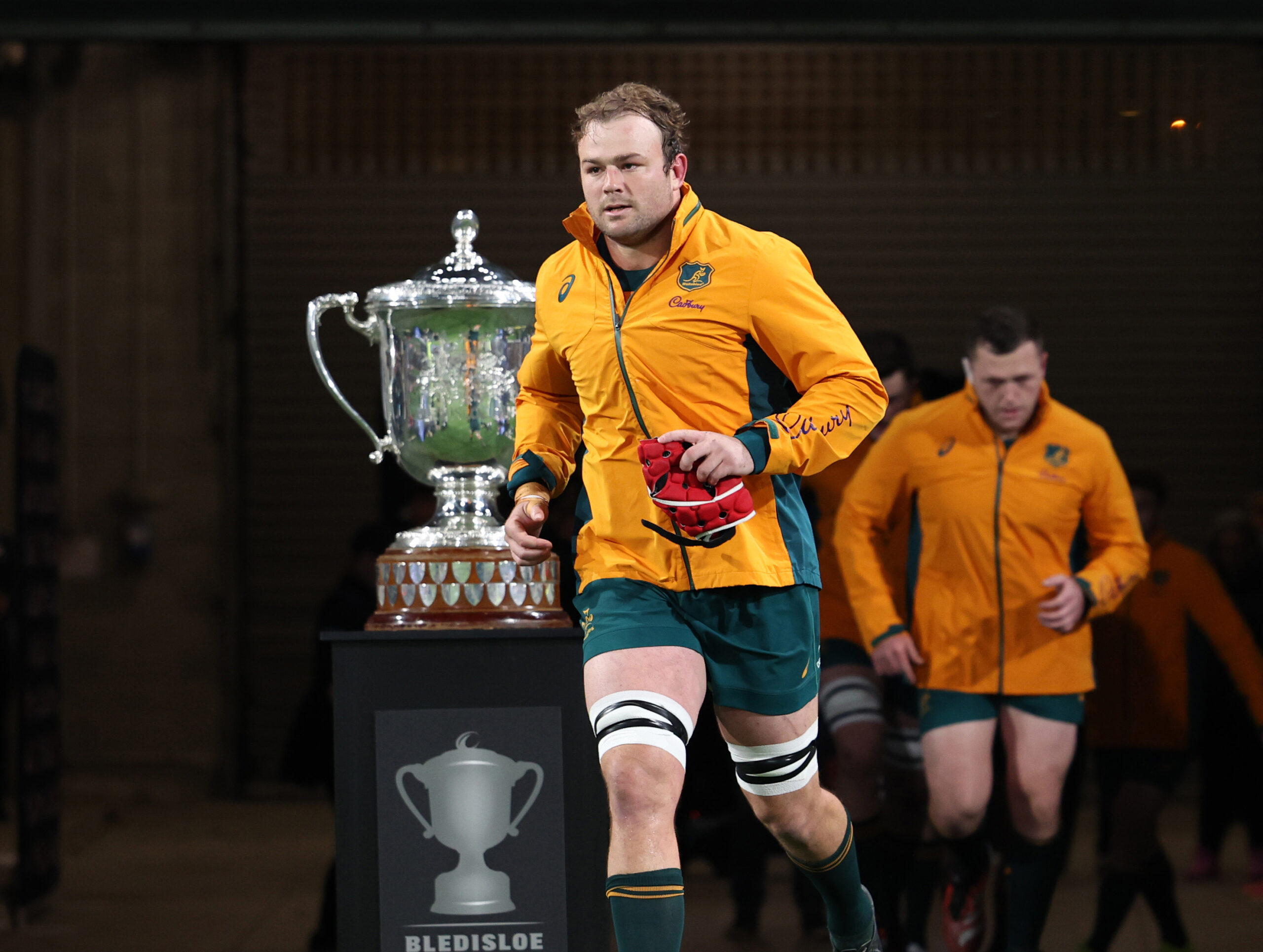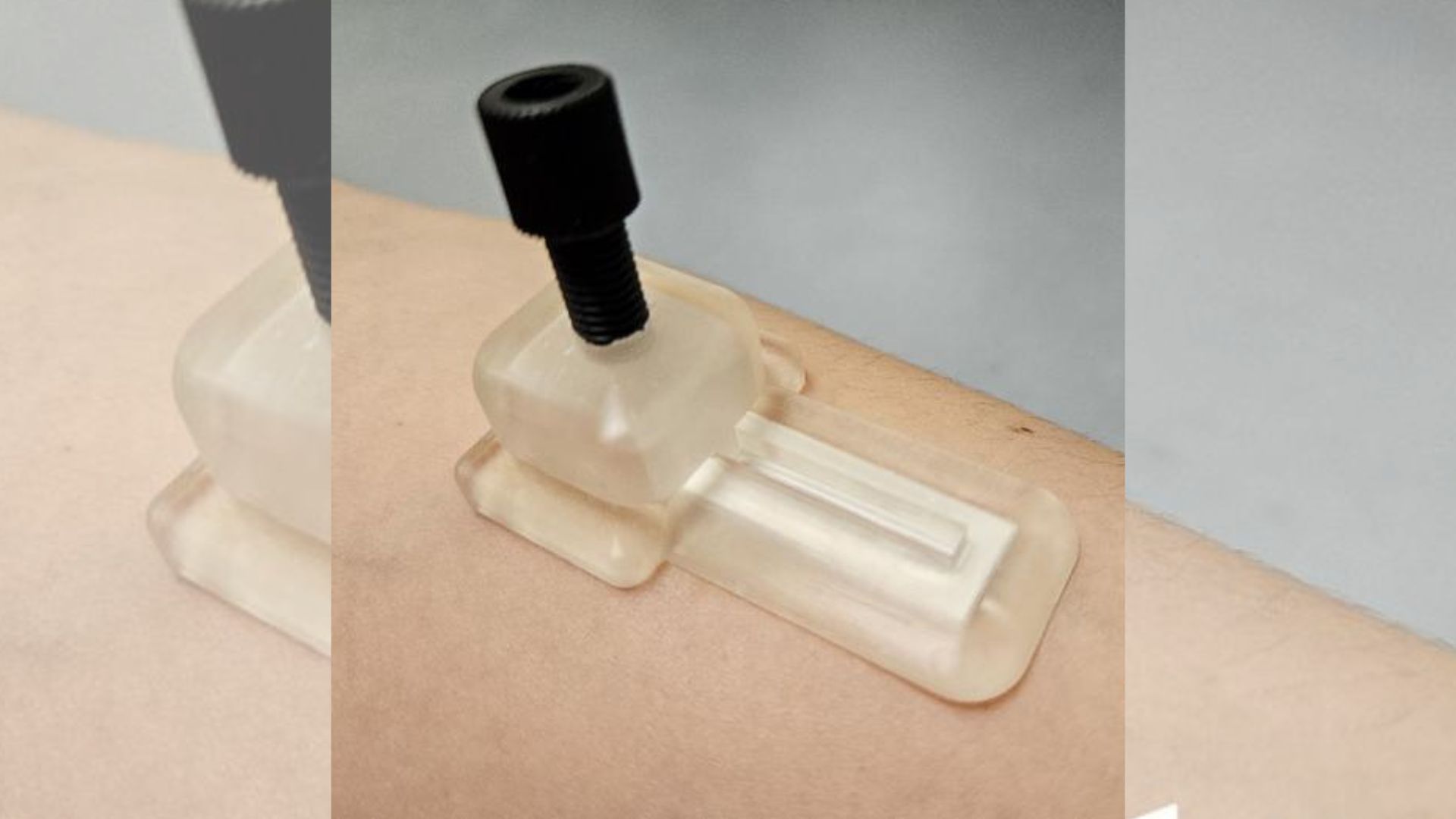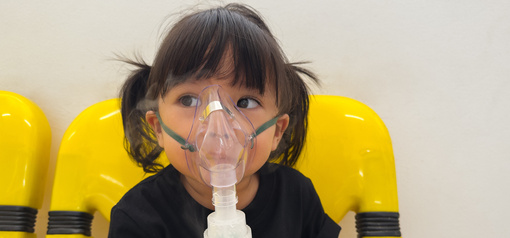- UCLA and Broadcom Team Up to Craft Wafer-Scale Unidirectional Imager All About Circuits
- Broadband unidirectional visible imaging using wafer-scale nano-fabrication of multi-layer diffractive optical processors Nature
- Wafer-scale nano-fabrication of multi-layer diffractive optical processors enables unidirectional visible imaging Phys.org
Blog
-
UCLA and Broadcom Team Up to Craft Wafer-Scale Unidirectional Imager – All About Circuits
-

Streaked Shearwaters Prefer to Excret in Air, New Study Shows
Ornithologists from the University of Tokyo have observed excretions of streaked shearwaters (Calonectris leucomelas) in the open ocean using belly-mounted video cameras. These seabirds exhibited a tendency to avoid excretion while floating on the sea surface and consistently excreted during flight; excretion timings showed periodicity, occurring every 4-10 minutes during daylight hours with inter-event intervals varying within a few minutes.
The streaked shearwater (Calonectris leucomelas), a species of seabird found in the Pacific Ocean. Image credit: Kanachoro.
Understanding when and how often seabirds excrete at sea is important for understanding their potential influence on marine ecosystems.
Whales are known to redistribute nutrients through excretion, the ‘whale pump.’
Large and widespread populations of seabirds could similarly shape key pelagic ecosystem processes.
“I was studying how seabirds run on sea surface to take off,” said lead author Dr. Leo Uesaka, a researcher at the University of Tokyo.
“While watching the video, I was surprised that they dropped feces very frequently.”
“I thought it was funny at first, but it turned out to be more interesting and important for marine ecology.”
Using eraser-sized, backward-facing cameras strapped to the bellies of 15 streaked shearwaters, Dr. Uesaka and his colleague, Dr. Katsufumi Sato, recorded and analyzed nearly 200 defecation events.
They found that the birds almost always relieved themselves while flying and that defecation often followed shortly after takeoff.
Occasionally, the birds took off solely for bathroom breaks and returned to the water within a minute.
These findings suggest that they intentionally avoid pooping while floating.
“Streaked shearwaters have very long and narrow wings, good for gliding, not flapping,” Dr. Uesaka said.
“They have to flap their wings vigorously to take off, which exhausts them.”
“This means the risk of excreting on the sea surface outweighs the effort to take off. There must be a strong reason behind that.”
The researchers suspect this habit may spare the birds from fouling their feathers with feces, help them avoid attracting predators, or simply help the birds poop more easily compared to a floating position.
While in flight, the birds pooped about every 4 to 10 minutes.
The authors estimated that the birds excrete 30 grams of poop every hour, which is about 5% of their body mass.
“We don’t know why they keep this excretion rhythm, but there must be a reason,” Dr. Uesaka said.
To find out, the scientists plan to use cameras or temperature sensors with longer battery life, combined with GPS, to map where seabirds release their droppings at sea.
They hope that these future studies will offer further insights into the role of seabird feces in marine ecology.
“Feces are important. But people don’t really think about it,” Dr. Uesaka said.
The findings appear today in the journal Current Biology.
_____
Leo Uesaka & Katsufumi Sato. Periodic excretion patterns of seabirds in flight. Current Biology 35 (16): R795-R796; doi: 10.1016/j.cub.2025.06.058
Continue Reading
-

Leeds use Elland Road ‘X factor’ to beat Everton in Premier League opener
Leeds, amid the cacophony, pinned passive, panicky Everton back in the first half, every tackle bringing supporters to their feet – especially a crunching challenge by Ethan Ampadu that left Kiernan Dewsbury-Hall prone on the turf.
If there was a worry for Leeds and Farke, it was that their dominance in the first half brought no reward, their attack a blunt instrument despite their superiority, with only one of their 12 shots on target.
Could they maintain that intensity after the break? The answer was no.
Instead, Leeds showed other qualities they will require this season as they dug deep, did the dirty work – albeit with little or no threat from a dreadful Everton – and eventually claimed the win with that dramatic late twist.
New Leeds keeper Lucas Perri was given a comfortable introduction as Everton left him virtually unemployed apart from one low shot from Carlos Alcaraz in the closing stages, which he saved comfortably.
Everton introduced new loan signing Jack Grealish with 20 minutes left, but this was a performance beyond rescue and redemption – an illustration of why Moyes has expressed his concerns about the lack of new arrivals, with acquisitions needed at right-back, on the right side and in the central midfield position.
Moyes clearly feels France under-21 striker Thierno Barry is a raw work in progress, but it is hard to see how he could have delivered anything worse than the performance Beto served up at Elland Road.
Leeds, in contrast, will be buoyed by the sheer exuberance and energy that poured down from the stands into Farke’s players. One game only, yes, but the surge of belief and optimism this result and performance will deliver is vital.
Continue Reading
-

Ultra-fast Airy beams keep network flowing past walls and obstacles
Ultra-fast wireless signals have a weakness: they can’t see walls. As engineers push into the sub-terahertz spectrum to handle the enormous data demands of virtual reality and autonomous vehicles, even a bookcase or a passing person can block a signal, causing data loss.
Now, researchers at Princeton University have developed a system that allows these high-frequency signals to bend around obstacles, keeping data flowing in even the most cluttered environments.
The breakthrough uses a combination of physics and machine learning to create “Airy beams”—curved transmission paths that can navigate around objects instead of bouncing off them.
First proposed in 1979, Airy beams had mainly been studied for their physics. Princeton’s team went a step further: they trained a neural network to select the optimal beam in real time for any environment, adapting as obstacles appear or move.
Lead researcher Yasaman Ghasempour, an assistant professor of electrical and computer engineering at Princeton, said, “As our world becomes more connected and data-hungry, the demand for wireless bandwidth is soaring.
Sub-terahertz frequencies open the door to far greater speeds and capacity.” She added that the work is an important step toward deploying data transmission in the sub-terahertz band, which could handle 10 times the data of current wireless systems.
Signals adapt in real-time
Unlike lower-frequency radio waves that spread widely, sub-terahertz signals travel in tightly focused beams, making them vulnerable indoors.
Previous solutions relied on reflectors to bounce signals around obstacles, but these are not practical in most real-world settings. The new approach allows the signal itself to curve, much like a curveball in baseball, using precise beam shaping.
Graduate student Haoze Chen, the paper’s lead author, said, “This is for complex indoor scenarios where you don’t have line of sight. You want the link to adapt to that.”
He added, “Most work with Airy beams has focused on creating the beams and exploring their underlying physics. What we are doing is not only generating the beams but finding which beams work best in the situation. People have shown that these beams can be created, but they have not shown how the beams can be optimized.”
Simulator enables virtual training
To train the neural network, the team developed a simulator that could model countless indoor scenarios without physically testing each one.
Chen explained, “For Airy beams, this is impractical. There are infinite ways of curving, depending on the degree of the curve and where the curve happens. There is no way a transmitter can scan through.”
Coauthor Atsutse Kludze said, “Throwing a lot of data at the neural net is not effective. Instead, we use principles from physics to create and train the neural net.”
Once trained, the system adapts incredibly quickly, maintaining strong connections even in crowded, constantly changing environments.
The team tested the system in experimental setups designed to mimic complex, real-world indoor environments. While the experiments focused on understanding and controlling the technology, the results suggest practical applications are within reach.
These include ultra-fast VR systems, fully autonomous vehicles, and future indoor wireless networks that can transmit massive amounts of data without interruption.
Ghasempour said, “This work tackles a long-standing problem that has prevented the adoption of such high frequencies in dynamic wireless communications to date. With further advances, we envision transmitters that can intelligently navigate even the most complex environments, bringing ultra-fast, reliable wireless connectivity to applications that today seem out of reach—from immersive virtual reality to fully autonomous transportation.”
The findings have been published in the journal Nature Communication.
Continue Reading
-

Perrie Edwards teases ‘Cameron Diaz’ music video amid solo career after tragic baby loss
Former Little Mix star Cameron Diaz has told her fans to ‘wake up’ as she teased her brand-new solo music after sharing her tragic baby loss story
Perrie Edwards has teased her brand-new solo music in an exciting The Holiday themed montage with fans on Instagram.
The former Little Mix singer, 32, delighted her loyal fans on Monday evening when she posted a 60-second clip of what will be the music video to her new song which is about to drop this week. The clip draws inspiration from Cameron Diaz in The Holiday as a narrator mocks Perrie after she wakes up from her slumber.
“This Autumn, find out what Perrie doesn’t have, the narrator teases as Perrie, who is dressed in a sequin baby blue blazer dress, furiously pushes an eye-mask back on her face after getting roasted by the voice. “Wakey wakey, it’s release week,” the singer teased in the caption.
It comes after former Little Mix singer Perrie confessed that she had an “out of body experience” when she found out she had suffered a miscarriage for the second time in her life in 2022.
READ MORE: Jade Thirlwall admits ‘daily battle’ to not take Ozempic after cruel commentsREAD MORE: Perrie Edwards struggled to leave the house over devastating health issue
The Little Mix singer, 32, shares son Axel, who turns four this week, with former Arsenal midfielder Alex Oxlade-Chamberlain, also 32, but has now opened up about the devastating miscarriage they suffered less than a year after Axel’s birth.
“We went for what was a 20-week scan, but we were actually 22 weeks, and that was just the worst day of my life. Like horrendous,” the singer revealed in a heartbreaking confession.
Content cannot be displayed without consent “And I just knew something was wrong in the scan, and [the doctor] just kept going over the same thing, over the same thing… I’ve never experienced an out-of-body experience where everything goes in slow motion,” said Perrie as she shared the ordeal with Celebs Go Dating expert Paul C. Brunson on his podcast, We Need To Talk.
Perrie continued: “So then I remember sobbing. [Alex] was injured at the time and he couldn’t really drive. He was struggling to drive, but I couldn’t see straight. I was just distraught. And yeah, we basically lost the baby at like 24 weeks.”
This wasn’t Perrie’s first experience with losing a child, with the singer describing Axel as a “rainbow baby” after she lost a baby during her first pregnancy.
“I had a miscarriage very early on with my first ever pregnancy, and it was so early. I remember finding out I was pregnant. Obviously, I started bleeding not long after, and I went to the hospital and I had the scan and they were like, ‘There’s no baby.’”
However, it was the second experience which Perrie said really hit home, after she and Alex had already begun preparing for the newborn’s arrival.
“When you’re fully, like carrying in your 24 weeks and you’ve planned out like that room and all these things, it’s really hard. And nobody knows other than, like, immediate friends and family. And I remember, like, shortly after, like, friends would message and be like, ‘how’s the bump?’ And I’ll be like, there is no bump.”
Despite the heartache, Perrie describes being pregnant as one of the “best times” in her life, and couldn’t be happier to be a mum to Axel.
“When I was pregnant with [Axel], like, I loved being pregnant, it was one of the happiest times of my life. Like, I just love carrying babies. And it was lovely.
“But I was a bit on edge thinking, oh, gosh, like, I want to get past the 12 weeks. I want to get past this. And when I get past every scan and that pregnancy was complete bliss, it was perfect.”
The South Shields-born singer has been in a relationship with footballer Alex, who now plays for Turkish team Beşiktaş, since 2016, after meeting on celebrity dating app Raya.
The couple got engaged in 2022, with Alex organising a romantic beachside proposal, but are yet to reveal any details of a wedding.
If you have been affected by this story, advice and support can be found at the Miscarriage Association. You can call them on 01924 200799 or email info@miscarriageassociation.org.uk
Follow Mirror Celebs on TikTok , Snapchat , Instagram , Twitter , Facebook , YouTube and Threads.
Continue Reading
-

JAY-Z’s new album on the cards?
JAY-Z’s friend teases his upcoming album The last time JAY-Z released an album, 4:44 came out in 2017. But his longtime collaborator teased that his new work on music is in the works.
Appearing on the Drink Champs podcast, Memphis Bleek said, “I just was with him in Vegas. He just came out on the show, like, yo, my *****, they went stupid.”
He noted, “I said, ‘Listen, I know you working. Save me a verse.’ He’s like, ‘Alright, I got you.’ So if it happens, it happens.”
On the other hand, Jay had recently been dogged by a rape allegation by an unnamed woman represented by lawyer Tony Bubzee, who claimed he, along with Sean ‘Diddy’ Combs, sexually abused her when she was 13.
However, the lawsuit was dropped after inconsistencies were found in her account. In response, the Grammy winner filed a defamation lawsuit against the woman and her attorney.
“Jay lost other contracts in the sports and entertainment space that would have generated revenues of at least, $20 million,” the filing read. “We have agreements to produce entertainment programs for certain sporting events.”
It stated, “After Mr. Buzbee filed the lawsuit, the media reported that other businesses could end their deals with Roc Nation, and forced one to speak out and address whether these false allegations would end our business relationship.”
In the wake of the lawsuit, the accuser and her lawyer attempted to dismiss the case by claiming several events, including that the parties had agreed to quash the motion, as well as that the allegations were sealed in court documents.
But the music mogul’s legal team concluded with a denial, saying no such deal exists. “Total lie. He brought a false case, lost badly and was forced to dismiss quickly. End of story.”
Continue Reading
-

Wallabies Dominate Fantasy Rugby Championship Week 1 » allblacks.com
The Fantasy Rugby Championship kicked off with fireworks in Round One, and it was Australia’s stars who lit up the leaderboards.
Harry Wilson led the charge with a massive 72 points, thanks to a two-try performance in the Wallabies’ thrilling comeback win over the world champion Springboks in Johannesburg. He edged out Argentina’s playmaker Tomás Albornoz, who piled on 68 points with a try, three conversions and a strong running game against the All Blacks. Completing the top three was Wallabies fullback Tom Wright, whose electric form produced a try, an assist, 107 running metres and two line breaks for 63 points.
It was a golden round for Australia, with five of the top 10 Fantasy scorers wearing gold jerseys. Backs Wright, James O’Connor, Max Jorgensen and Joseph Sua’ali’i all featured prominently.
For the All Blacks, the standouts were two-try stars Sevu Reece (47) and Samisoni Taukei’aho (43), alongside Fantasy favourite Ardie Savea (42). Taukei’aho also claimed top hooker honours, just edging Argentina’s warrior Julián Montoya (40). What made Taukei’aho’s haul even more remarkable was that he entered the game from the bench late in the match – meaning every Fantasy manager bold enough to back him pulled off a genuine masterstroke. Those who trusted the impact player were rewarded with one of the weekend’s biggest point swings, turning what looked like a gamble into a stroke of Fantasy genius.
When it came to selections, it was no surprise that Savea (73%) and Will Jordan (68%) were the most popular picks among Fantasy managers, with Sua’ali’i (52%) not far behind. Jordan also carried the weight of the captaincy – 28% of managers backed him as skipper, doubling his 39 points to big effect. These three were already among the most popular choices in Fantasy Super Rugby Pacific earlier this year, and they’ve continued to pay dividends for managers in the international game.
At the very top of the leaderboard, Argentina fan Alvaro Araya (team: Tulio) set the early pace with a massive 762 points – finishing a full 63 clear of second place and claiming the Week 1 prize.
With the Wallabies firing, the Pumas producing big scorers, South Africa surely wanting a win at home, and the All Blacks’ heavy hitters always a threat, the stage is set for another thrilling week in the Fantasy Rugby Championship.
So far, fans have gone all in on Fantasy Rugby Championship with more than 8,000 private and public leagues already up and running. That’s thousands of rugby communities battling it out, sharing the banter, and adding extra spice to every match. And the best part? There’s still plenty of time to jump in! Over the next five game weeks you can create your own team, start a league with your mates, and turn every try, tackle, and turnover into bragging rights. PLAY HERE.
Continue Reading
-

Self-powered microneedle patch monitors biomarkers without blood
Researchers have developed a self-powered microneedle patch that can collect health biomarker samples without blood, batteries, or external devices. In proof-of-concept tests using synthetic skin, the patch successfully collected biomarkers over periods ranging from 15 minutes to 24 hours.
The development could transform how people monitor stress, hormones, and other health indicators at home or in clinical settings.
Sampling fluid beneath skin
“Biomarkers are measurable indicators of biological processes, which can help us monitor health and diagnose medical conditions,” says Michael Daniele, corresponding author of the paper.
“The vast majority of conventional biomarker testing relies on taking blood samples. In addition to being unpleasant, blood samples also pose challenges for health professionals and developers. You need to remove the platelets, red blood cells, and so on before testing the relevant fluid.”
The patch uses microneedles to collect dermal interstitial fluid (ISF) from just below the top layer of skin cells. “ISF contains almost all of the same biomarkers found in blood,” Daniele says. “What’s more, ISF makes for a ‘cleaner’ sample. It streamlines the biomarker testing process.”
The patch consists of four layers: a polymer housing, a gel layer, a paper layer, and the microneedles themselves. The microneedles swell on contact with ISF. Fluid moves through the microneedle into the paper, which stores the sample. Glycerol in the gel creates osmotic pressure, pulling more ISF through the paper until saturation.
Efficient, passive collection
“The paper is where the ISF is stored,” Daniele says. “When you take the patch off, you remove the paper strip and analyze the sample.”
The researchers tested the patch on two synthetic skin models. “It worked well,” Daniele says. “The patches collected measurable results in as little as 15 minutes and were capable of storing the biomarker samples for at least 24 hours.”
For proof-of-concept testing, the team monitored cortisol, a stress biomarker. “That means it’s something people may want to monitor multiple times a day without drawing blood repeatedly,” Daniele says. The patch could work for many other ISF biomarkers as well.
The patch is made from inexpensive materials, with microneedles as the highest cost component. “Drawing blood requires vials, needles, and usually a phlebotomist. The patch doesn’t require any of those things,” Daniele says.
The researchers have begun human testing and are developing devices to “read” the paper strips. “We’ve already developed an electronic device that can ‘read’ cortisol levels from the paper strip and are working on another device for a different biomarker,” Daniele says.
The team seeks industry partners for diagnostics applications and scaling production. The work, published in Lab on a Chip, was supported by NSF’s ASSIST center, the NC State Institute for Connected Sensor-Systems, the Chancellor’s Innovation Fund, and SEMI-NBMC grants.
Daniele is also an officer and founder of DermiSense, Inc., which commercializes microneedle-based technologies.
Continue Reading
-

Research Aims to Prevent Lung Damage in Babies and Toddlers with Severe Flu, RSV
Newswise — Children under 2 years of age are at highest risk for getting critically ill from the flu or RSV and requiring intensive care. Currently, doctors can only provide breathing support for severe flu or RSV infection, since no medications exist to speed up recovery or prevent excessive damage to the lungs. With her lab research funded by the National Institutes of Health, Bria Coates, MD, from Ann & Robert H. Lurie Children’s Hospital of Chicago, is determined to discover how to interrupt the process of injury to the lungs and promote cell repair, so patients can avoid long term consequences from lung damage.
“We want to understand why some babies and toddlers get so much sicker from viral infections,” said Dr. Coates, critical care medicine physician at Lurie Children’s and Assistant Professor of Pediatrics at Northwestern University Feinberg School of Medicine. “One possible cause might be an overactive immune response.”
Dr. Coates studies how the innate immune system responds to severe flu or RSV. This is the type of immune system that is preprogrammed to recognize something foreign in the body and is the first responder to infection.
When triggered, the innate immune system sends out macrophages, a type of white blood cell that is meant to engulf and digest the virus. Dr. Coates found, however, that in young mice, macrophages do not remove the virus. They cause damage to the lungs instead.
Her team is attempting to calm down this macrophage attack by introducing existing medications and tracking the effect.
“When we examine cells in a dish, we can see how the medication helps with lung cell repair,” said Dr. Coates.
“The virus injures the lung by causing DNA damage in lung cells, which activates the innate immune system. But the resulting inflammation is excessive and causes even more harm to the growing lung. We are trying to find ways to modify the inflammation pathway and support more effective DNA damage repair, which would lead to faster recovery in critically ill children,” she explained.
Dr. Coates is the Crown Family Research Scholar in Developmental Biology at Lurie Children’s.
Continue Reading
-

‘Ketamine Queen’ to plead guilty to federal charges, selling drug that killed Matthew Perry
A drug dealer dubbed the “Ketamine Queen” has agreed to plead guilty to five federal criminal charges, including that she provided the drug that ultimately led actor Matthew Perry to suffer a fatal overdose in October 2023, federal prosecutors announced Monday.
Jasveen Sangha, 42, also admitted in her plea agreement to selling four vials of ketamine to Cody McLaury in August 2019. McLaury, 33, died hours later in his Los Angeles home from a drug overdose that included ketamine.
Sangha agreed to plead guilty to one count of maintaining a drug-involved premises, three counts of distribution of ketamine, and one count of distribution of ketamine resulting in death or serious bodily injury.
She was one of five people charged with conspiracy to distribute ketamine to Perry, who died from acute effects of the drug. Sangha supplied the ketamine the “Friends” actor injected on the day of his death, according to the plea agreement, which also noted that she sold drugs for years out of her North Hollywood apartment, described in a federal indictment as the “Sangha stash house.”
As part of a deal struck with federal prosecutors, Sangha admitted to knowingly distributing ketamine to Perry, whose struggles with drug addiction and numerous rehab visits were well documented.
Mark Geragos, one of Sangha’s lawyers, said “my client is accepting her responsibilities.” She faces up to 65 years in prison based on the plea agreement. Federal prosecutors, however, said in the plea agreement that, if she accepts responsibility, they could seek to lessen time served.
Prosecutors declined to comment on the case. Sangha is expected to formally enter a guilty plea in coming weeks.
Perry, who had become addicted to intravenous ketamine, started purchasing the powerful drug from a Southern California doctor in late September 2023, according to the indictment and law enforcement officials. A month later, Perry reached out to an acquaintance, Erik Fleming, a former producer and drug counseling worker.
According to her plea agreement, Sangha worked with Fleming, 55, of Hawthorne to knowingly distribute ketamine to Perry. In October 2023, Sangha and Fleming sold Perry 51 vials of ketamine, which were provided to Kenneth Iwamasa, Perry’s live-in personal assistant.
Iwamasa, a 60-year-old from Toluca Lake, repeatedly injected Perry with the ketamine that Sangha supplied to Fleming. On the day Perry died in his ocean-view hot tub, Iwamasa had injected him with at least three shots of Sangha’s ketamine, according to the plea agreement.
Shortly after the Los Angeles Times and TMZ published news of Perry’s death, according to the plea agreement, Sangha called Fleming on the encrypted messaging app Signal to discuss how to distance themselves from it. That day, Sangha updated the settings on the Signal apps to automatically delete her messages with Fleming. She further instructed Fleming, “Delete all our messages.”
Two days after Perry’s death, Fleming left Sangha a voicemail on Signal and texted, “Please call … Got more info and want to bounce ideas off you. I’m 90% sure everyone is protected. I never dealt with [Perry]. Only his Assistant. So the Assistant was the enabler. Also they are doing a 3 month tox screening … Does K stay in your system or is it immediately flushed out[?].”
Sangha, who has been in custody for the past year, faces a maximum sentence of 20 years in federal prison on the drug-involved premises count, up to 10 years for each ketamine distribution count and up to 15 years for the count of distribution of ketamine resulting in death or serious bodily injury.
As part of the formal guilty plea in the coming weeks, she will also admit to using her North Hollywood residence to store, package, and distribute narcotics since at least June 2019.
Prosecutors allege Sangha knew the dangers of ketamine. In August 2019, she allegedly sold the drug to McLaury before he overdosed, according to the plea agreement. One of McLaury’s family members later sent her a text saying the ketamine had resulted in his death.
After receiving the text, prosecutors say, she conducted a Google search: “Can ketamine be listed as a cause of death?”
In an affidavit, a U.S. Drug Enforcement Administration agent described Sangha as a “high-volume dealer” who kept “handwritten notes that appeared to detail thousands of dollars of drug transactions.” In multiple chat threads with clients on encrypted messaging apps, she used coded language for drug transactions, according to the agent.
She referred to her supplier as the “master chef” or the “scientist,” prosecutors wrote in a court complaint detailing the case. Her electronic devices included saved videos of her cooking liquid ketamine on a stovetop to convert it to powder, prosecutors say.
In addition to Sangha, four others have already pleaded guilty to federal charges for their roles in Perry’s death.
Fleming has pleaded guilty to one count of conspiracy to distribute ketamine and one count of distribution of ketamine resulting in death. At a November sentencing, he will face up to 25 years in federal prison. Iwamasa pleaded guilty to one count of conspiracy to distribute ketamine and causing death. At his sentencing Nov. 19, he will face up to 15 years in federal prison.
Ketamine is typically used as an anesthetic but has grown in popularity over the last decade as a therapeutic treatment for certain mental health diagnoses, including post-traumatic stress disorder and depression. The drug, known in the party scene as “Special K,” has simultaneously become much more sought-after for recreational purposes.
Two physicians who also helped supply Perry with ketamine are awaiting sentencing. Dr. Mark Chavez, 55, of San Diego pleaded guilty to one count of conspiracy to distribute ketamine. He faces up to 10 years in federal prison at his sentencing hearing next month.
Salvador Plasencia, 43, a.k.a. “Dr. P,” pleaded guilty July 23 to four counts of distribution of ketamine. His sentencing hearing is scheduled for December, at which time he will face up to 10 years in federal prison for each count.
Continue Reading


